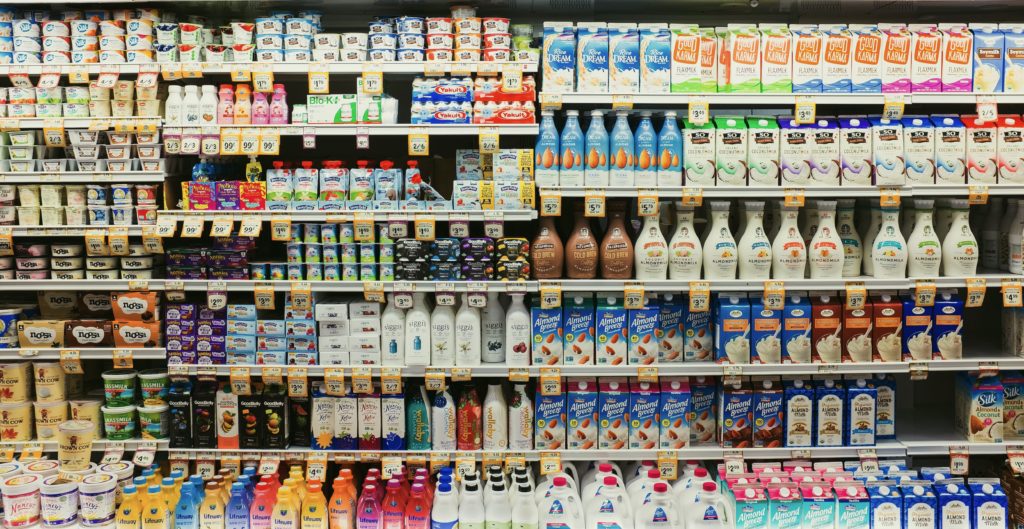187 million people, almost one and a half times Mexico’s current population, could lose their homes. The reason isn’t war or political upheaval, it is due to climate change. Climate change will be one of the largest problems our generation has to fix. It has the potential to cost trillions of dollars or to create large scale famines. Our generation will witness all these adverse effects over our lifetime.
The agricultural industry is one of the largest contributors to greenhouse gas emissions, representing 10% of overall emissions. Furthermore, the industry carries out many other actions that lead to climate change such as the cutting down of forests in order to build farms. Therefore, our generation’s decision about the food we eat has a major environmental impact that could, collectively, save the world or further doom our planet.
So here are a few suggestions on food you should eat and others you should try to eat less of in order to eat not only for our generation but generations to come:
Try to eat more beans and lentils
These foods are some of the best to eat for people watching out for their environmental impact. These foods have a very low carbon footprint, meaning that their production contributes few carbon emissions. Also, they require a little amount of water to grow.
Most interestingly, they also make the soil more fertile. By a process called nitrogen fixing, the production of these plants converts the nitrogen from the atmospheres into nitrates, which plants need to grow, for the soil. This process makes the soil more fertile. This increase of nitrogen in the soil makes farmers rely less on artificial fertilizer which takes a lot of energy to produce. Artificial fertilizer can also lead to something known as red tide (algae making the water turn red and causing large amounts of fish death). When it rains, some of the nitrates from the fertilizer gets washed away with the rainwater. If the rainwater ends up in the oceans, a lot of those nitrates also end up in the ocean too. Just like nitrates are useful for increasing the amount of crops a farmer produces, it also increases the amount of algae. So, if a large amount of nitrates end up in ocean, then it can cause algae booms that can turn the water red. This algae also takes the dissolved oxygen out of the water and with enough algae, it leads to not enough oxygen for fish, leading to mass fish deaths. In 2018, this process happened in Florida. It cost the state millions of dollars due to tourists not wanting to visit beaches filled with rotting fish or swim in red water.
Overall, eating more beans and lentils are a great way to help reduce the impact of climate change.
Try to eat less beef
Beef is one of the largest greenhouse contributors for two main reasons. First, through their digestive process, cows produce methane that they eventually burp out. The same amount of Methane traps 25 times more heat than Carbon Dioxide traps, making Methane is a lot worse in terms of causing global warming. Second, it takes a lot of energy to produce beef. Typically, humans can only get 10% of the energy that went into the production of that beef because so much energy is “wasted”. A farmer has to grow the crops used to feed the cows, then they have to harvest and transport those crops to wherever the cows are. Then the cow eats those crops where a lot of energy gets wasted through digesting those crops and walking around. Thus, because we waste nearly 90% of the energy that went into the production of beef, it is not that energy-efficient to eat it.
I’m not advocating to just give up beef altogether, but maybe try to reduce a little bit of your consumption of it. For instance, if every American ate one quarter of a pound less of beef a week, it would be as if we took 10 million cars off the road.
Try to eat/use less palm oil
You may have not heard about it, but palm oil is in many daily items. They are especially present in cosmetic products like shampoos and lipstick. Palm oil has contributed to much deforestation in Indonesia and Malaysia. Farmers see a major economic opportunity by cutting down forests and replacing them with palm oil producing trees. The problem is that these forests store tons of carbon, which when burned causes large amounts of carbon dioxide to enter our atmosphere. Furthermore, these forests consume a lot more carbon dioxide than the new palm oil farms. So, by releasing carbon and reducing the amount of carbon consumed, the production of palm oil has a major effect on increasing the amount of carbon dioxide in our atmosphere.
Because of their major market presence, perhaps try to look for brands that use sustainably sourced palm oil. Luckily, many brands such as Nutella and Oreos have been dropping palm oil producers that contribute to deforestation and moved to more sustainable producers. If we reward these more sustainable companies and withhold our money from brands that use unsustainable palm oil producers, then we might be able to reduce the amount of deforestation occuring.
Conclusion
In many ways, agriculture contributes to climate change. If we use our collective power to buy and consume food that is environmentally friendly like beans, lentils, or sustainably sourced palm oil and eat less environmentally damaging food, then we may be able to ward off climate change and ensure a healthier planet for generations to come.

Alex Dray is a Senior at Ransom Everglades in Miami, Florida. He is involved in his school’s Speech and Debate, cross-country, and track teams. He also serves as a representative for his grade on Student Government. When away from school, you could find Alex biking with his friends or volunteering for a political campaign. His passion to find out ways to improve the world drives him in what he does. He recognizes that previous generations have created many problems that Gen Z is going to have to deal with and solve. For that reason, Gen Z Identity lab interests him— it is a place where Gen Z can discuss the problems they see and propose solutions.


